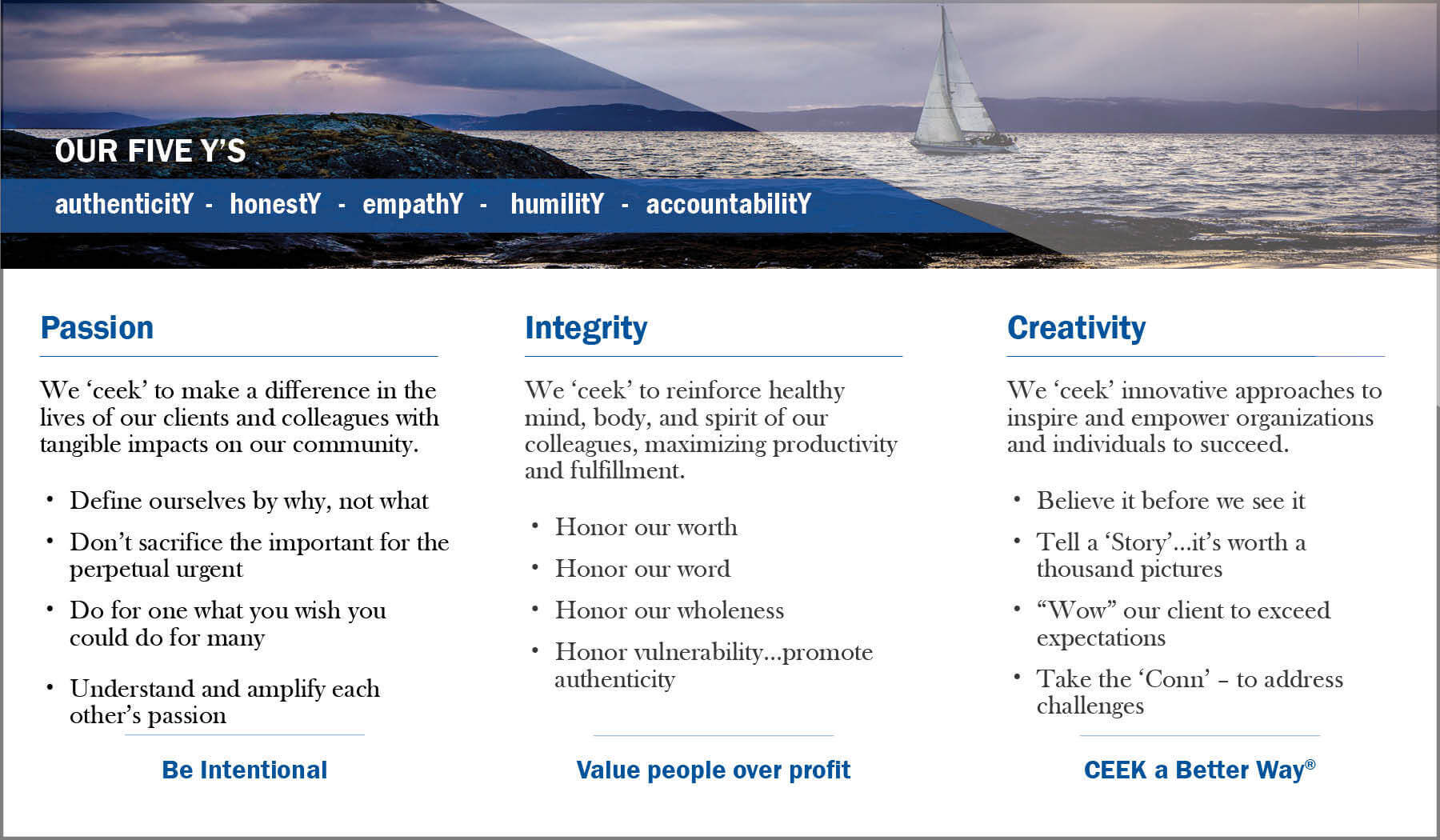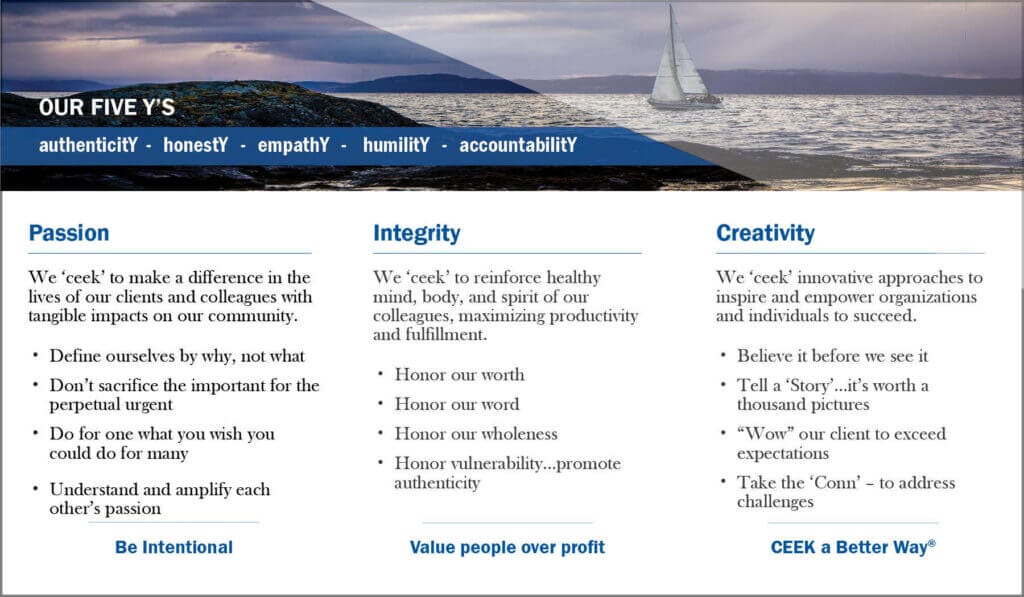

Live Your Values – November Organizational Wellness Challenge
Facebook
Twitter
LinkedIn
WhatsApp
For decades, organizations have hypothesized and researched the root causes and impact of disengagement within the workforce. We often site poor management and questionable policies as the source of a disengaged workforce. Employees blame poor working conditions, unclear priorities, poor leadership, or a general disregard for their welfare.
At CEEK, we contend that hypocrisy is the root cause and most significant factor that negatively impacts employee engagement. We define hypocrisy as a state where professed values differ from demonstrated behaviors.
At the risk of stating the obvious, your organization must rid itself of leaders who intentionally act in a manner inconsistent with professed values. “Do as I say, but not as I do,” is a recipe for disaster. Such behavior is destructive and the enemy of effective leadership.
However, in many cases, the hypocrisy that exists within organizations is not intentional or malicious. Rather, it reflects the lack of a shared understanding. Employees hold different standards by which they assess the demonstration of the organization’s core values.
As a simple example, imagine an organization that defines “Respect” as one of its core values. One person may assume that means that I follow through on the requests of my leaders without question. Another may assume it means that leaders welcome inputs and dissenting views to better inform decisions. Who’s right?
In an effort to minimize the degree of unintentional, perceived hypocrisy that destroys engagement in organizations, it is important to define the standards by which we live our values. For this month’s Organizational Wellness Challenge, CEEK encourages you to take a closer look at the values you and your organization profess to hold most dear. Ask yourself and reflect upon the following questions.
- Have you defined your values? – Without referencing any existing material, we encourage you to write your definition of one or more of the core values of your organization. If your organization has an established definition, compare it to the one you wrote. Are they similar? If so, this is a good start. If not, or if you simply can’t find a definition of your organization’s core values, consider engaging a team to define them.
- What behaviors reinforce these values? – Pick one of your core values. Make a list of three to five behaviors that you believe reflect application of that value. Ask one or more colleagues to do the same. Do the lists match? Are there any behaviors that seem to contradict each other? Consider engaging your colleagues to articulate and select the top three to five behaviors that reinforce each core value.
- What behaviors contradict these values? – With the same value assessed in Step 2, make a list of any observed behaviors within your organization that seem to contradict the core value. Again, ask one or more of your colleagues to do the same. Are there commonalities? What observed behaviors remain unaddressed that need to stop? Consider engaging your colleagues to clearly articulate behaviors that are counter to the professed values of the organization.

At CEEK, each of our team members carries this credo card as a reminder of our values. With this card in hand, CEEKers have a better idea of what our organization’s values are and the behaviors that reinforce those values.
No matter where you sit in your organization, you have an opportunity to influence culture. Whether you lead your family, a team of ten, an office of hundreds, or agency of thousands – clarify and align behavioral expectations with your values. Minimize the degree of hypocrisy. Live your values. CEEK a Better Way.



